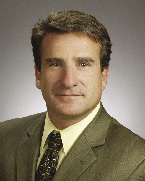By utilizing energy-efficient technologies that are commercially available today, developers can create landmark properties that are simultaneously innovative, eco-friendly and cost-effective.
Scores of developers have achieved their objectives by integrating clean and efficient combined heat and power (CHP) and district energy networks into their projects. CHP plants recycle the waste heat ordinarily discharged during the power generation process into useful thermal energy and dramatically decrease the volume of fossil fuels consumed. With district energy, central plants produce steam, hot water, or chilled water, distribute these energy products to nearby buildings via a pipe distribution network, and eliminate the need for individual buildings to install, operate and maintain boilers and chillers. Most district energy networks are located in densely populated metropolitan areas such as Veolia Energy's Boston-Cambridge network, which utilizes CHP and serves the thermal energy requirements of 240 customers, including 14 of the tallest buildings in Boston.
District energy and CHP can be adapted for use in many settings, so clients typically vary in scale, configuration and function - office buildings, mixed-use developments, hospitals, colleges and universities, hotels, manufacturing plants, and retailers. District energy and CHP have been consistently recognized as viable energy solutions for developers across the country.
District energy and CHP offer developers a number of benefits:
* Economical: With district energy networks, capital expenditures, interest payments, property taxes, labor, maintenance and insurance costs are minimized because large mechanical rooms are not needed in each building. CHP substantially reduces the fuel input required to produce a given quantity of useful energy product.
* Increases Revenue-generating Space: Without large mechanical rooms in each building, additional space may be utilized to generate revenue.
* District Energy and CHP are Clean: Central plants are always designed to meet stringent environmental requirements. In addition, many district energy networks are powered by combined heat and power plants. When developers utilize district energy networks fed from CHP, the "green steam" produced and delivered to them significantly reduces the carbon footprint of the facilities served.
William DiCroce is executive vice president and chief operating officer of Veolia Energy North America, Cambridge, Mass.
Tags:







